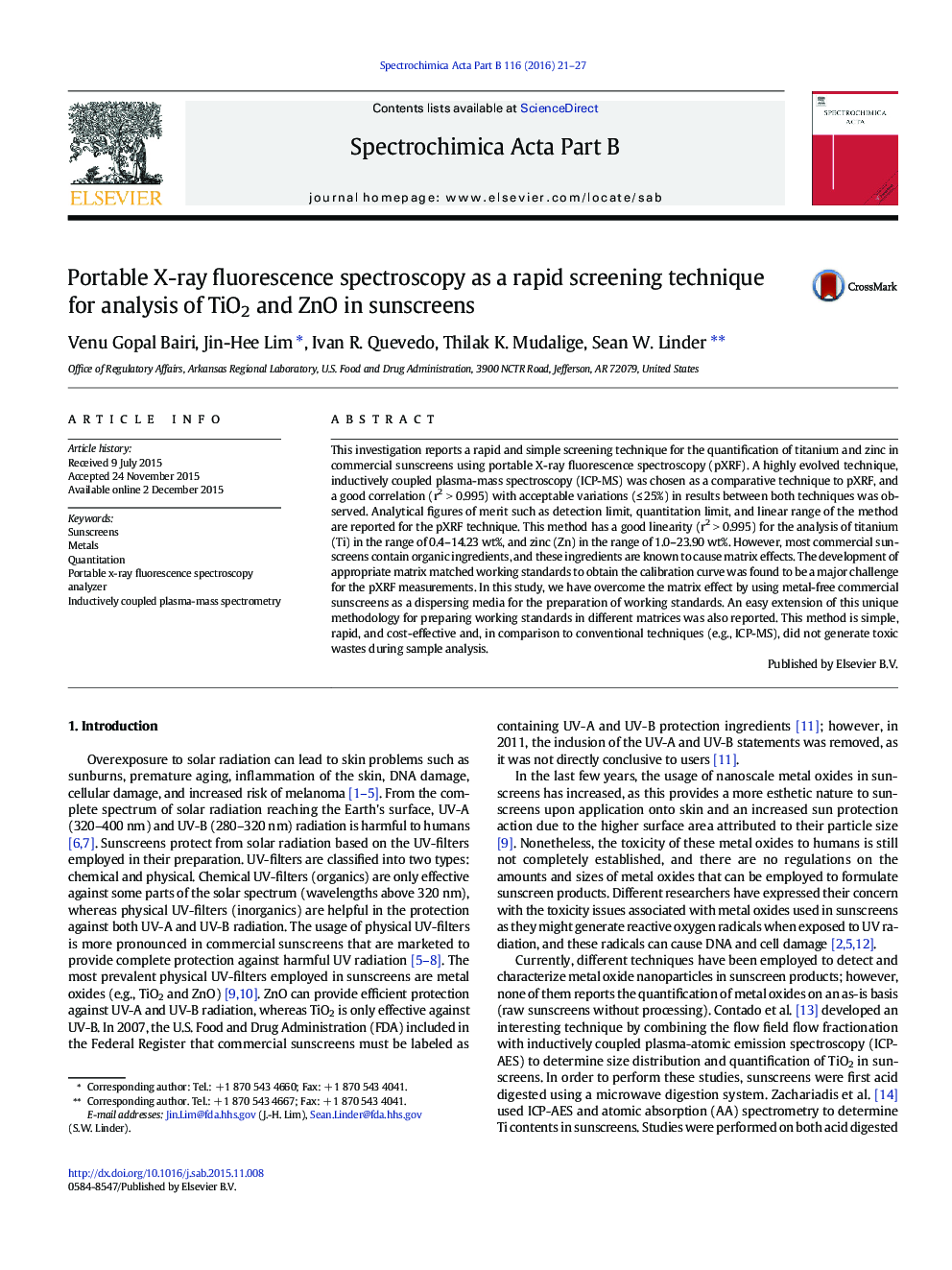| Article ID | Journal | Published Year | Pages | File Type |
|---|---|---|---|---|
| 1239524 | Spectrochimica Acta Part B: Atomic Spectroscopy | 2016 | 7 Pages |
•A rapid quantitative method was developed for metals analysis in sunscreens.•pXRF analyzer was used for quantitation of metals by a matrix matching technique.•A unique matrix was identified for quantitative analysis of 40 commercial sunscreens.•ICP-MS technique was chosen as a comparative technique against pXRF analysis.
This investigation reports a rapid and simple screening technique for the quantification of titanium and zinc in commercial sunscreens using portable X-ray fluorescence spectroscopy (pXRF). A highly evolved technique, inductively coupled plasma-mass spectroscopy (ICP-MS) was chosen as a comparative technique to pXRF, and a good correlation (r2 > 0.995) with acceptable variations (≤ 25%) in results between both techniques was observed. Analytical figures of merit such as detection limit, quantitation limit, and linear range of the method are reported for the pXRF technique. This method has a good linearity (r2 > 0.995) for the analysis of titanium (Ti) in the range of 0.4–14.23 wt%, and zinc (Zn) in the range of 1.0–23.90 wt%. However, most commercial sunscreens contain organic ingredients, and these ingredients are known to cause matrix effects. The development of appropriate matrix matched working standards to obtain the calibration curve was found to be a major challenge for the pXRF measurements. In this study, we have overcome the matrix effect by using metal-free commercial sunscreens as a dispersing media for the preparation of working standards. An easy extension of this unique methodology for preparing working standards in different matrices was also reported. This method is simple, rapid, and cost-effective and, in comparison to conventional techniques (e.g., ICP-MS), did not generate toxic wastes during sample analysis.
